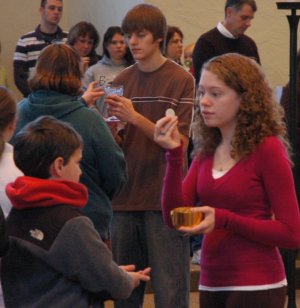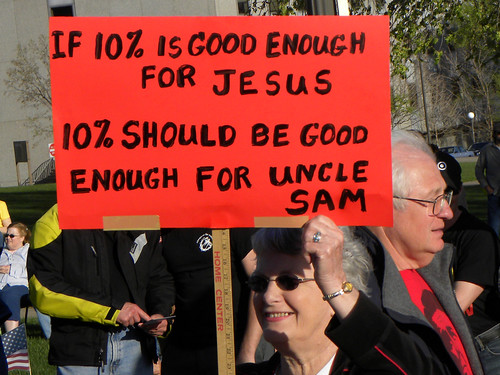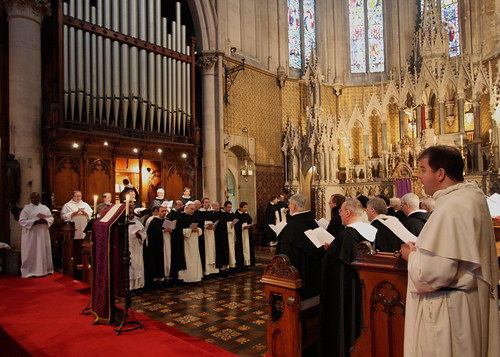
The Ascension by John Singleton Copley
By Michael P. Foley
“Glory be to God for dappled things!” exults the great Jesuit poet Gerard Manley Hopkins. And among those dappled things, shaded with their various spots and hues, we must count not just “skies of couple-colour” and “rose-moles all in stipple upon trout that swim,” but the traditional liturgical year, that great annual pageant of all things “counter, original, spare, and strange.”
And one of the strangest things found in the liturgical year and in Christian dogma (strange in that it is a surprise to common sense) is belief in the resurrection of the dead. In an age where victories over sin, ignorance, and doubt seem to be increasingly rare, it is easy for Catholics to forget that their ultimate hope is not simply in avoiding Hell and reaching Heaven but in enjoying God with their souls reunited to their bodies. Spiritual masters such as Saint Augustine have even gone so far as to suggest that until that reunion takes place, the blessed in Heaven experience a restlessness or “patient longing.”1 The Beatific Vision just won’t be the same without new bodies in a new Heaven and a new earth.
Our Glorified Bodies
Belief in bodily resurrection is no easy matter. The difficulty begins with answering a seemingly simple question, “what is the body?” Shakespeare plays upon this when Prince Hamlet describes how a king may go “through the guts of a beggar.” A king dies, his body is eaten by worms, a beggar goes fishing with one of the worms, and then he eats the fish that ate the worm.2 Whose body is whose?
And yet this ambiguity also belies a great potential. If we can’t pin down the nature of the body, then who can naysay what it is capable of becoming? Saint Paul chides doubters who ask, “How do the dead rise again?” by comparing the body to a seed that must die before it truly lives.3 It is a metaphor worth dwelling on. The human body, which is a magnificent creation, is a mere acorn in comparison to the oak tree it is destined to become. Acorns retain their substance when they grow into trees (they don’t become butterflies), yet the difference between an acorn and an oak could not be more profound; the former is virtually nothing in comparison to the latter. If our bodies, impressive as they are, are mere acorns now, imagine what they will be as trees on the Last Day.
As excellent as the Beatific Vision is, the human soul is naturally designed to rule a body, and thus there remains some unfinished business even
for a saint in Heaven.
* * * * * * *
To give an example of what may await us, consider the four properties of a glorified body as singled out in Catholic theology: agility, subtlety, impassibility, and clarity. Agility is the perfect responsiveness of the body to the soul, which will allow it to move at the speed of thought. Subtlety is the power of penetrating solid matter, while impassibility is the impossibility of suffering or dying. Lastly, clarity is the total absence of bodily deformity and a “resplendent radiance and beauty.”4
The astonishing excellence of a resurrected body was cleverly expressed by a young colonial printer named Benjamin Franklin, who at the age of 22 wrote his own epitaph:
The body of B. Franklin, PrinterGod’s Path to Being All in All
(Like the Cover of an Old Book
Its Contents torn Out
And Stript of its Lettering and Gilding)
Lies Here, Food for Worms.
But the Work shall not be Lost;
For it will (as he Believ’d) Appear once More
In a New and More Elegant Edition
Revised and Corrected
By the Author.5
The general resurrection of the body is also a most fitting consummation of Christ’s Paschal victory over death. The Passion, Resurrection, and Ascension of Our Lord open the gates of Heaven to our souls but do not immediately end our vulnerability to the effects of original sin. Those effects include a degradation of the body: every bodily deformity or disease, every violent injury or accident, every misuse or abuse, is a sad reminder that we still live east of Eden. And death remains what it always was, a literal humiliation for one and all, a return of the body to the ground (humus).
As excellent as the Beatific Vision is, the human soul is naturally designed to rule a body, and thus there remains some unfinished business even for a saint in Heaven. This body of ours, this temple of the Holy Spirit that is mocked and exploited by the world, the flesh, and the devil, is also in need of redemption. How splendid, then, that the Elect are not only promised eternal life in Heaven but a “reform” of “the body of our lowness” into a body like that of our risen Lord,6 a body that Saint Paul refers to as “glorified” and even “spiritual.”7 The body, which this side of the grave can be a handful to deal with, will become a luminous reflection of the soul’s divinely-given excellence once it is glorified. In Saint Augustine’s words, “what was once [the soul’s] burden will be its glory.”8 And how fitting that this glory is part of God’s ongoing transformation of creation until He becomes “all in all.”9
Our Lord assumed a human body in the Virgin’s womb, and the Feast of the Ascension celebrates the fact that that same body now sits at the right of the Father; therefore, our human bodies are included in the divine plan of salvation. For the first time in history, there is a human body in Heaven!
* * * * * * *
Easter Sunday
The extraordinary form of the Roman rite excels in the re-presentation of these eschatological realities, and it does so gradually. Easter, for instance, celebrates not only Christ’s victory over the grave but the first full-fledged instance of a glorified body. The New Testament makes it clear that Jesus’ body on that first Easter morning was not a resuscitated corpse like that of Lazarus, for although it was indeed the selfsame body that was born of the Virgin Mary, it had undergone a significant transformation. That is why His closest friends did and did not recognize Him,10 and it is why the risen Lord was able to pass through locked doors11 as well as appear and disappear.12 In other words, His body now possessed the properties of glorification. The implication for the rest of us is clear. As Saint Paul explains, our Savior will take “the body of our lowness” and make it like “the body of His glory.”13 Consequently, during the Easter Octave we pray that we may be transformed into a “new creature”14 and pass on to “heavenly glory.”15
Ascension
As a whole, however, the theme of our bodily glorification remains rather muted during the Easter season. This is true for the Feast of the Ascension as well, since the Church understandably focuses more on Christ’s completion of His earthly ministry and His promise to send the Holy Spirit. Indeed, the Collect for the Ascension prays that we learn to “dwell in mind amidst heavenly things,” not in body. Still, there are hints about the future of God’s Elect. To paraphrase Saint Gregory Nazianzus, “What is not assumed is not saved.”16 Our Lord assumed a human body in the Virgin’s womb, and the Feast of the Ascension celebrates the fact that that same body now sits at the right of the Father; therefore, our human bodies are included in the divine plan of salvation. For the first time in history, there is a human body in Heaven!
In fact, by the end of the first Ascension Day, there may have been three bodies: Our Lord’s, Elijah’s—who was finally allowed into the Empyrean Heaven (see below)—and Enoch, the figure in the Old Testament who was mysteriously “taken” by God after his death but who could not have been allowed to experience the Beatific Vision prior to the resurrection of our Lord.17 What we do know is that our Lord did not enter into the true Holy of Holies empty-handed: besides His own glorified body and body, he brought the souls He had rescued from limbo on Good Friday, when “He descended into Hell.” The Breviary hymn for the Divine Office speaks of our ascended Lord at the head of a “triumph,” a Roman parade in which a victorious general showcased all of the slaves he had captured in battle.18 The hymn artfully inverts this image, showing Christ as the liberator of souls from limbo now parading them into Heaven after having completed his earthy campaign, as it were.
Corpus Christi
Shortly after Paschaltide, the Church celebrates the Feast of Corpus Christi. Again the main focus is on the meaning of the feast at hand (in this case, the miracle of transubstantiation), but not without reference to our promised glorification. In the Divine Office for Corpus Christi, the Eucharist is called the “pledge of our future glory.”19 Jesus Himself says as much when He links Holy Communion to the Four Last Things: “He that eateth My flesh, and drinketh My blood, hath everlasting life: and I will raise him up on the last day.”20 The Eucharist is not only essential to our earthly pilgrimage as spiritual food and medicine, it is preparing us, by what it is and what it does, for our final transformation into a glorified creature of God. For the Eucharist is not just the body, blood, soul, and divinity of Jesus Christ, but His glorified Body and Blood.21 When we receive Holy Communion, we are therefore receiving a token of what we, God willing, will one day become.

The Poem of the Soul - Memory of Heaven by Anne Francois Louis Janmot
And it is not just our bodies that are being glorified by the Eucharist. Pope Benedict XVI writes eloquently of the Holy Sacrifice of the Mass transforming the entire landscape of being:
The substantial conversion of bread and wine into his body and blood introduces within creation the principle of a radical change, a sort of “nuclear fission,” to use an image familiar to us today, which penetrates to the heart of all being, a change meant to set off a process which transforms reality, a process leading ultimately to the transfiguration of the entire world, to the point where God will be all in all (cf. 1 Cor 15:28).22The Transfiguration (August 6)
The Pope’s reference to the transfiguration of the world brings us to our next feast. On the Second Sunday of Lent, the Transfiguration of our Lord is commemorated in order to arouse the faithfuls’ desire for the glory of Easter; and on August 6, we celebrate the Feast of the Transfiguration to reflect more properly on the significance of this event. Part of that reflection involves meditating on the refulgence and majesty that our own glorified bodies will one day have.23 The Breviary hymn for the feast speaks of the event in terms similar to the praise of the Eucharist we have just seen, as a “sign of perennial glory.”24 Moreover, the little chapter used during the Divine Office is Philippians 3:20-21, the passage about reforming our body of lowness. Just as the historical Transfiguration prefigured the Resurrection of Our Lord, so too does the liturgical celebration of the Transfiguration prefigure the general resurrection of the body.
The assumption of the Blessed Virgin Mary, body and soul, is therefore a beautiful thing not only in its own right (for who was more worthy than she of such an honor?) but with respect to all of the Elect, as it brings to the fore the doctrine of the resurrection of the body.
* * * * * * *
How interesting that both of Jesus’ spiritual companions on Mount Tabor that day had bodies missing in action. Elijah was taken up into heaven in a fiery chariot, while according to Jude 1:9, Saint Michael the Archangel and the devil fought over Moses’ body after he died. Some have interpreted Saint Jude’s cryptic statement to refer to the struggle between Michael and Satan through their earthly agents in Egypt, Moses being an emissary of God and the angels while Pharaoh and his magicians being minions of the devil. Others interpret the verse in reference to a fight over Moses’ remains, with Satan wanting the body buried in such a way that would seduce the Hebrews into idolatrizing it.25 But Saint Michael prevailed, and to this day the location of Moses’ grave is unknown.
A third interpretation is that both Moses and Elijah represent different states of the afterlife, Moses’ soul having come from limbo to witness the Transfiguration and Elijah’s body and soul (for they were never separated by death) coming from Heaven—albeit not the “Empyrean Heaven,” according to Saint Thomas Aquinas, for that is only accessible to man through Christ’s Paschal mystery.26 The Transfiguration on Mount Tabor thus discloses a fascinating spectrum of human existence: the living “acorn” bodies of Saints Peter, James, and John; the disembodied soul of Moses; the departed yet unglorified body of Elijah, and the transfigured body of Jesus as the foreshadowing of total glorification on the Last Day. In particular, our Lord’s Transfiguration foreshadows the gift of clarity, when “His face did shine as the sun, and His garments became white as snow.”27
The Assumption (August 15)
If bodily resurrection is promised to every faithful Christian disciple, then it is eminently fitting that Christ’s first and most faithful disciple should receive this gift before anyone else save Christ Himself. The assumption of the Blessed Virgin Mary, body and soul, is therefore a beautiful thing not only in its own right (for who was more worthy than she of such an honor?) but with respect to all of the Elect, as it brings to the fore the doctrine of the resurrection of the body.

The Assumption of the Virgin by Nicolas Poussin
The Mass for the Feast of the Assumption makes this connection explicit. The Collect prays that we “may deserve to be partakers of her glory,” while the Postcommunion beseeches God that through the intercession of the Blessed Virgin, “we may be brought to the glory of the resurrection.” This teaching emanates outward from the Mass to various private devotions. A novena to the Blessed Virgin on the occasion of the Assumption prays: “Teach me how small earth becomes when viewed from Heaven. Make me realize that death is the triumphant gate through which I shall pass to your Son, and that someday my body shall rejoin my soul in the unending bliss of Heaven.”
By defining the Assumption only five years after the close of WWII, it was as if the Pope were saying: Yet again, the Nazis and all such racists and eugenicists are wrong. Mary’s body, Mary’s Semitic body, is in Heaven, loved by God.
* * * * * * *
Even the timing of the proclamation of the dogma on the Assumption seems attuned to highlight God’s regard for our bodily existence, now and in the future. I once heard an outstanding sermon from an FSSP priest who speculated that Pope Pius XII’s infallible definition of the doctrine in 1950 was in part (intentionally or not) a corrective to World War II, the bloodiest war in human history. Specifically, the Third Reich, which the Pope so valiantly resisted, harbored an unprecedented hatred of not simply the Jewish religion but Jewish “embodiment,” the DNA of Abraham and his descendents, which is why they tried to exterminate that DNA entirely in their death camps. By defining the Assumption only five years after the close of WWII, it was as if the Pope were saying: Yet again, the Nazis and all such racists and eugenicists are wrong. Mary’s body, Mary’s Semitic body, is in Heaven, loved by God.
Time After Pentecost
These festal reminders of the resurrection from the dead elide nicely with the Time after Pentecost, that portion of the liturgical year which commemorates the pilgrimage of the Church from its birthday to the end of days—in other words, the period in which we are currently living. Because the Time after Pentecost symbolizes the time of the Church on earth, it is also a profoundly eschatological season, a season that looks ahead to the “Eschaton,” the Last Day, just as Christians facing east when they pray or assist at Mass do so as a sign of their anticipation of the Second Coming, when Christ shall come in glory from the East.

The Poem of the Soul - Up the Mountain by Anne Francois Louis Janmot
The eschatological note of the Time after Pentecost becomes noticeable around the Eighteenth Sunday, at which point the readings and prayers grow increasingly apocalyptic in tone. Verses from the prophets become much more common and references to the final manifestation of Christ more insistent. This sense of anticipation grows each week until it crescendos with the last Sunday after Pentecost (the last Sunday of the liturgical year), when the Gospel recalls Christ’s ominous double prophecy concerning the fall of Jerusalem in 70 A.D. and the terrifying end of the world.
The Lord’s Bride escorts us through a patchwork of feasts that teach us bit by bit about the immutable beauty that, God willing, will not only be ours but will render us, in the twinkling of an eye and at the sound of the trumpet, perfect icons of His brilliant glory.
* * * * * * *
But the eschatological theme is present earlier as well, and it includes a meditation on the future of our bodies. On the Fifteenth Sunday after Pentecost, for example, the Gospel reading is of our Lord’s raising from the dead the only son of the widow of Naim (Luke 7:11-16), while the Postcommunion prays: “In soul and in body, O Lord, may we be ruled by the operation of this heavenly gift; that its effect, and not our own impulses, may ever prevail over us.” And the bodily theme is central on the Twenty Third Sunday, when the Epistle lesson returns to Philippians 3:21 and the Gospel reading proclaims the resurrection of the daughter of Jairus, a prominent official of the Capharnaum synagogue (Mt. 9:18-26).
The Temporal and Sanctoral cycles of the Church calendar thus reinforce each other in marvelously conveying to us the meaning of the article in the Creed we pray every Sunday: “I look for the resurrection of the dead and the life of the world to come.”
Conclusion
Hopkins ends his poem “Pied Beauty,” which began this essay, with the verses, “He fathers-forth whose beauty is past change: Praise Him.” The Lord God, Hopkins tells us, is past change, and yet the way He brings us to His changeless beauty is through a revolving and dynamic symphony of patchy or “pied” beauty. In a similar way, the Lord’s Bride escorts us through a patchwork of feasts that teach us bit by bit about the immutable beauty that, God willing, will not only be ours but will render us, in the twinkling of an eye and at the sound of the trumpet, perfect icons of His brilliant glory.+
Notes
- City of God 13.20. [back]
- Hamlet IV.iii.27-31. [back]
- I Cor. 15:35ff. [back]
- John A. Hardon, S.J. Pocket Catholic Dictionary (New York: Doubleday, 1985), 79. [back]
- The epitaph was not used when Franklin died at the age of 84. [back]
- Phil. 3:21. [back]
- See Phil. 3:21; I Cor. 15:44. [back]
- Literal Meaning of Genesis 12.35.68 [back]
- I Cor. 15:28. [back]
- See Lk. 24:13-32; Jn. 20:1-16, 21:1-7. [back]
- See Jn. 20:19, 26. [back]
- See Lk. 24:36, 24:31. [back]
- Phil. 3:21. [back]
- Postcommunion for Easter Wednesday. [back]
- Secret for Easter Tuesday. [back]
- Gregory of Nazianzus, Letter (101) to Cledonius the Priest Against Apollinarius. [back]
- See Genesis 5:24. [back]
- See the hymn Jeus nostra redemptio: “Breaking through the gates of Hell/ Redeeming Those of yours held captive/ A Victor in a noble triumph/ You now reside at the Father’s right hand.” [back]
- Magnificat antiphon for II Vespers. [back]
- John 6:55. [back]
- In fact, this is one of the reasons that Holy Communion is not act of cannibalism, even though it involves consuming the flesh and drinking the blood of our Lord. No cannibal has ever come close to receiving a living and glorified body. [back]
- Sacramentum Caritatis, 11; see also 71. [back]
- For more on this topic, see Michael P. Foley, “Divine Do-Overs: The Secret of Recapitulation in the Traditional Calendar,” The Latin Mass 19:2 (Spring 2010), pp. 46-49. [back]
- The hymn is Quicumque Christum quaeritis, and the verse is Signum perennis gloriae. [back]
- A divergent theory posits that Satan argued that Moses was unworthy of burial at all since he had murdered an Egyptian as a young man. [back]
- See Summa Theologiae III.45.3.ad 2. [back]
- Mt. 17:2; see Mk. 9:1; Lk. 9:29. [back]





 [Dr. Peter A. Kwasniewski is Professor of Theology and Philosophy at Wyoming Catholic College in Lander, Wyoming. The present article, "Marini's conciliarist Manifesto," was originally published in The Latin Mass: A Journal of Catholic Culture and Tradition, Vol. 20, No. 3 (Summer 2011), pp. 6-10, and is reprinted here by kind permission of
[Dr. Peter A. Kwasniewski is Professor of Theology and Philosophy at Wyoming Catholic College in Lander, Wyoming. The present article, "Marini's conciliarist Manifesto," was originally published in The Latin Mass: A Journal of Catholic Culture and Tradition, Vol. 20, No. 3 (Summer 2011), pp. 6-10, and is reprinted here by kind permission of 

 Instead of a precious vessel made out of gold or silver, the priest or Eucharistic minister may be holding in his or her hand cheap earthenware. From it he/she proffers a Host and says, “The Body of Christ.” This brief declarative statement, no longer than “Have a nice day,” has replaced the beautiful prayer addressed to the individual for his eternal salvation as well as the mini-Benediction. Gone too are the gold patens and the communion cloth that add to the festive splendor and that reinforce belief in the Real Presence of every particle of the Host.
Instead of a precious vessel made out of gold or silver, the priest or Eucharistic minister may be holding in his or her hand cheap earthenware. From it he/she proffers a Host and says, “The Body of Christ.” This brief declarative statement, no longer than “Have a nice day,” has replaced the beautiful prayer addressed to the individual for his eternal salvation as well as the mini-Benediction. Gone too are the gold patens and the communion cloth that add to the festive splendor and that reinforce belief in the Real Presence of every particle of the Host.




